Your windows should reflect your home’s calm, uncluttered nature, but achieving a minimalist look can be challenging with the wrong design choices. Cluttered, busy windows can disrupt a room’s flow and serenity, making it feel overwhelming and disorganized.
In this guide, we’ll show you how to transform your windows into simple, clean, and minimalist features that enhance your space’s tranquillity and style.
1. Embracing Minimalist Window Design
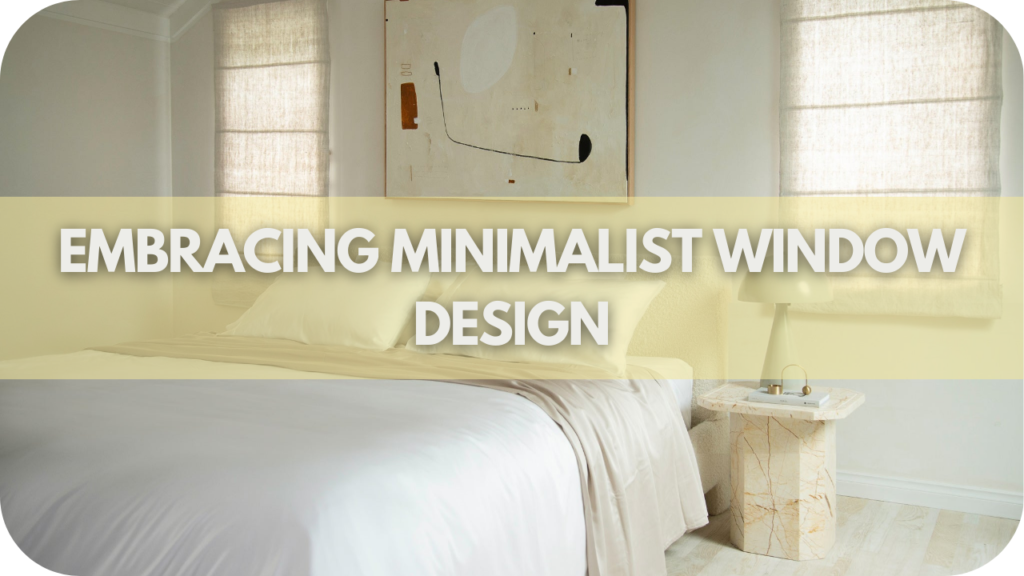
A minimalist approach to window design revolves around simplicity, functionality, and elegance, all of which contribute to a serene and clutter-free space. Minimalism in interior design isn’t just about removing excess; it’s about thoughtfully selecting elements that serve a purpose and enhance the overall aesthetic.
Windows play a pivotal role in this philosophy, serving as both functional components and visual focal points that can either harmonise with or detract from the minimalist aesthetic.
To achieve a minimalist window design, focus on clean lines and unobtrusive treatments. Avoid heavy, ornate drapes that can overwhelm a space, and instead opt for window treatments that complement the simplicity of your décor.
Blinds are an ideal choice, offering a streamlined look that maintains the room’s openness. Roller blinds, with their smooth, unembellished surfaces, or Venetian blinds, with their precise horizontal lines, are perfect examples. These options ensure your windows enhance rather than compete with your minimalist design.
Additionally, consider how your windows interact with natural light. Minimalist spaces thrive on natural light, which helps to create an open, airy atmosphere. Ensure your window treatments allow maximum light penetration, contributing to the room’s sense of space and calmness.
2. Selecting the Ideal Blinds for a Minimalist Aesthetic
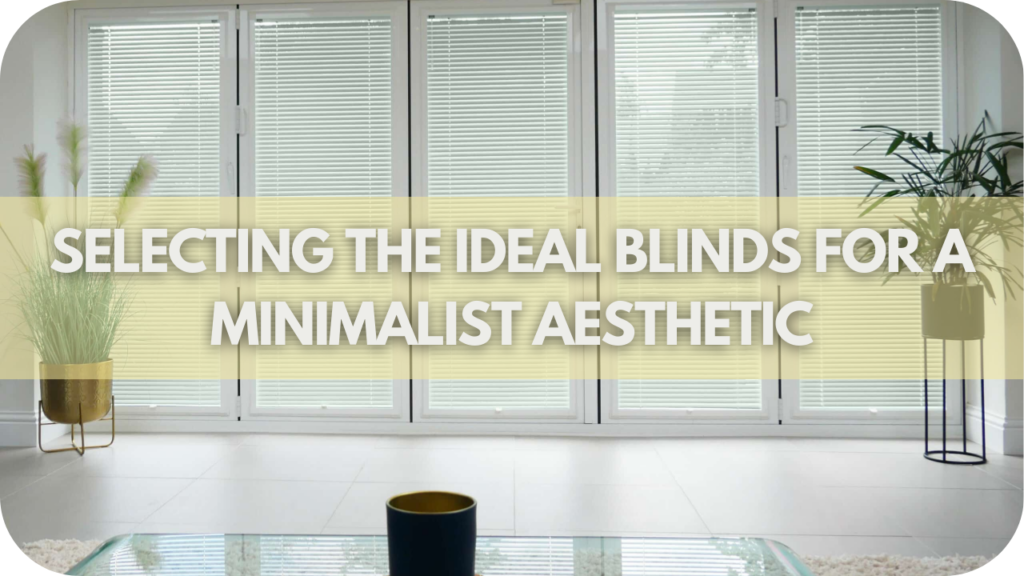
Choosing the right blinds is crucial for maintaining a minimalist aesthetic that complements the overall design of your space. The blinds you select should embody simplicity and functionality, serving their purpose without drawing unnecessary attention.
Roller blinds are an excellent option, offering a sleek, seamless look that fits perfectly within a minimalist framework. Their unobtrusive design allows them to blend into the background, providing privacy and light control without overshadowing other design elements.
Venetian blinds are another strong contender for a minimalist space. Their adjustable slats provide precise control over light and privacy, allowing you to customise the ambience of your room easily.
Venetian blinds’ clean, horizontal lines contribute to the overall aesthetic, enhancing the sense of order and simplicity.
For larger windows or sliding doors, panel glide blinds offer a contemporary solution that aligns with minimalist principles. Their wide, smooth panels create clean, unbroken lines, adding to the room’s spacious feel.
These blinds can be drawn back entirely, revealing a full view of the outside and maximising natural light when desired.
Each of these blind options supports the minimalist ethos of “less is more,” ensuring that your window treatments are both functional and understated.
3. Choosing Colours: Neutral and Calm Tones
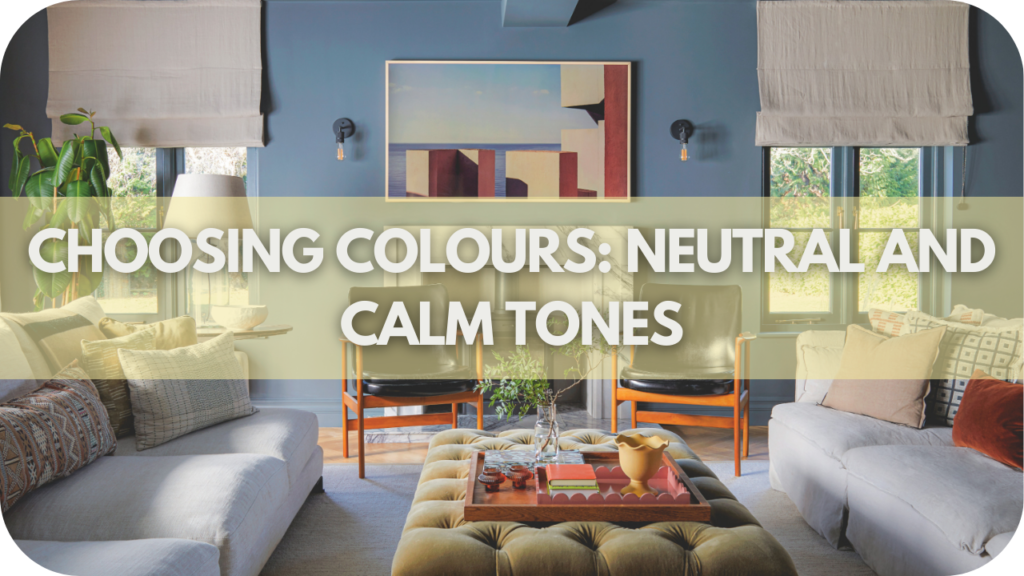
Colour is a fundamental aspect of minimalist design, particularly regarding window treatments. The right colour palette can significantly create a calm, cohesive environment that enhances the minimalist aesthetic.
Neutral tones such as whites, greys, and beiges are the cornerstone of minimalist design. These colours uniquely make spaces feel larger and more open, contributing to the serene and uncluttered atmosphere that is characteristic of minimalism.
When selecting blinds, choose colours that either match or complement your existing décor. This approach ensures that your window treatments blend seamlessly with the rest of the room rather than standing out or clashing with other elements.
For instance, white or light grey blinds can create a harmonious look when paired with similar wall colours, enhancing the room’s overall unity.
It’s also essential to consider how your chosen colours interact with natural light. Light neutral tones reflect sunlight, making the room feel brighter and more expansive. This is particularly important in minimalist spaces, where natural light is crucial in enhancing the open, airy feel.
Avoid bold, vibrant colours for your blinds, as these can disrupt the calm, understated look you aim for. The goal is to create a soothing, balanced environment where every element contributes to the overall sense of peace and order.
4. Maximising Natural Light in Your Space
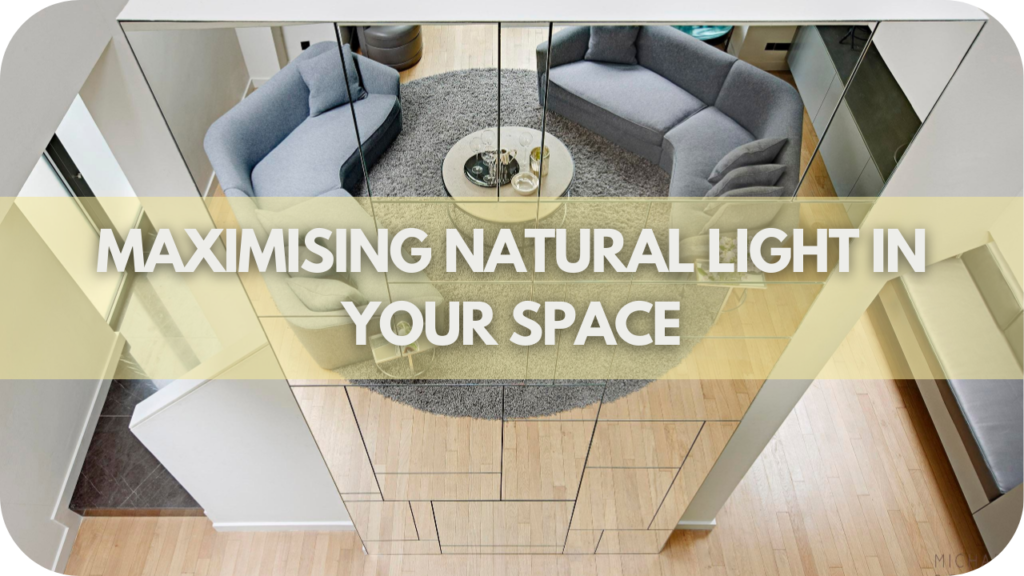
Natural light is a key element in minimalist design, bringing warmth and openness to a room while enhancing its clean lines and simplicity.
How you manage light in your space can significantly impact the overall atmosphere, making it essential to choose window treatments that maximise natural light while maintaining privacy and functionality.
Sheer blinds are an excellent option for achieving this balance. These blinds allow sunlight to filter through softly, creating a gentle, diffused glow that brightens the room without harshness.
The delicate nature of sheer blinds means they can maintain privacy without completely blocking out the natural light, making your space feel both open and intimate.
Alternatively, blinds with adjustable slats, such as Venetian or vertical blinds, offer greater control over the amount of light that enters the room. This flexibility allows you to adjust the blinds throughout the day, tailoring the light levels to suit your needs.
For instance, you might fully open the slats to let in maximum light during the day and then partially close them in the evening for a softer ambience.
Another consideration is the placement and size of your windows. Larger windows naturally allow more light to enter, and the right blinds can enhance this effect. Opt for window treatments that can be fully retracted or adjusted to allow the maximum amount of light into the room when desired.
5. Maintaining Clean Lines and Uncluttered Space
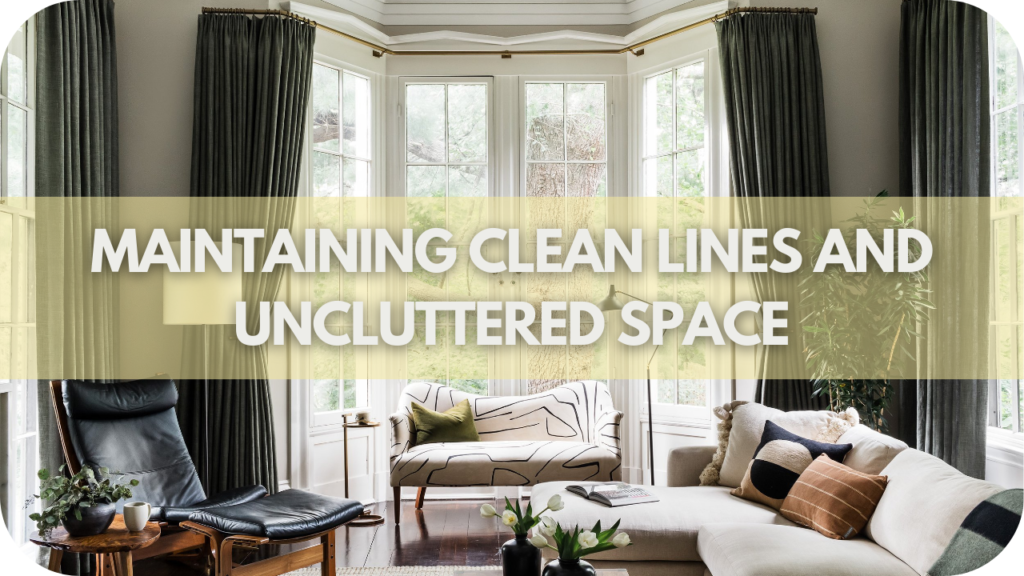
Maintaining clean lines and an uncluttered space is essential for achieving a minimalist look, particularly regarding your windows. The key to this aesthetic is simplicity—every element should serve a purpose and contribute to the overall sense of order and calm.
When selecting window treatments, it’s important to avoid excessive accessories and embellishments that can detract from the clean, streamlined look you want.
Blinds that fit neatly within the window frame are ideal for preserving these clean lines. Made-to-measure blinds are particularly effective in this regard, as they provide a tailored fit that enhances the architecture of your windows without adding unnecessary bulk.
You can maintain the minimalist principle of “less is more” by avoiding blinds that overlap the frame or extend beyond the window’s edges,
Regular maintenance is also crucial in preserving the minimalist aesthetic. Dust and grime can quickly accumulate on blinds, disrupting the clean, sleek look you’ve worked to achieve.
Make it a habit to clean your blinds regularly, ensuring they remain free from dust and debris. This not only keeps your windows looking sharp but also contributes to a healthier indoor environment.
Finally, consider how your window treatments interact with the rest of your décor. Blinds should complement, rather than compete with, other elements in the room. Maintaining clean lines and an uncluttered space requires attention to detail, but the result is a serene, harmonious environment that embodies the essence of minimalism.
6. Incorporating Minimalist Window Treatments Throughout Your Home
Consistency is key when incorporating minimalist window treatments throughout your home. To achieve a cohesive look, it’s important to ensure that each room follows the same design principles, creating a unified and harmonious aesthetic.
The window treatments you choose should reflect the minimalist ethos of simplicity and functionality, regardless of the room they’re in.
In the living room, opt for blinds that offer flexibility in light control while maintaining a clean, linear appearance.
Roller blinds or Venetian blinds are excellent choices, as they can be easily adjusted to manage light without compromising the minimalist design. These blinds provide the perfect balance between form and function, allowing you to create the right ambience for different occasions.
In bedrooms, consider using blackout blinds in neutral tones. These blinds provide privacy and darkness for a good night’s sleep and align with the minimalist aesthetic through their sleek, unobtrusive design.
Using neutral colours ensures that the blinds blend seamlessly with the room’s décor, maintaining a calm and restful environment.
For kitchens, where practicality is paramount, choose blinds that are easy to clean and maintain while still fitting within the minimalist framework. Vertical blinds or roller blinds with a simple, wipe-clean surface are ideal, offering both functionality and a streamlined look.
Consider pairing your blinds with minimalist curtains to add a touch of softness without disrupting the minimalist style. Light, airy fabrics in neutral tones can add texture and warmth to a room, enhancing the overall aesthetic without overwhelming the space.
Conclusion
Achieving a simple, clean, and minimalist look for your windows requires thoughtful choices and attention to detail.
Ready to elevate your space? Explore our range of minimalist blinds and take the first step towards a serene, uncluttered home.


